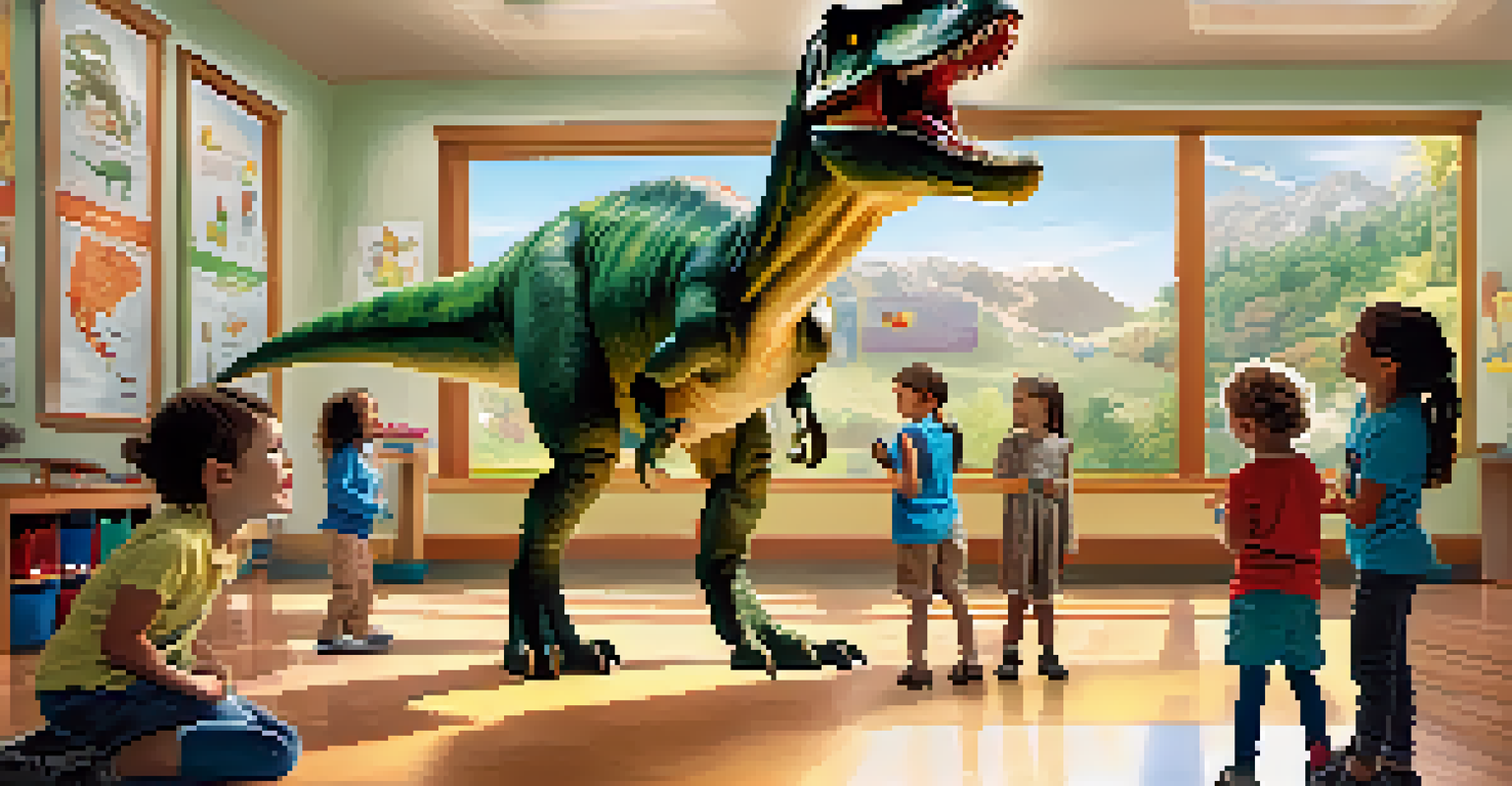Telling Stories Through Augmented Reality Applications

Understanding Augmented Reality and Its Potential
Augmented Reality (AR) blends the digital and physical worlds, allowing users to interact with computer-generated content in real-time. Imagine walking through a park and seeing historical figures come to life before your eyes, sharing their stories right on the very ground you walk. This technology has gained traction not just in gaming but also in storytelling, creating immersive experiences that captivate audiences like never before.
Augmented Reality is a new frontier for storytelling, where the lines between the real and the imagined blur, enabling us to experience narratives in ways we never thought possible.
By superimposing digital elements onto our real-world environment, AR provides a unique canvas for storytellers. It enhances narratives by offering users a more engaging way to explore content, whether through educational apps, museums, or interactive installations. This shift allows for multi-dimensional storytelling, where a story isn't just told, but experienced.
As we continue to embrace AR, its potential to revolutionize how we consume stories is immense. It invites audiences to step into narratives, fostering a deeper connection with the characters and plots. This makes AR not just a tool, but a transformative force in the world of storytelling.
The Emotional Impact of Immersive Storytelling
One of the most compelling aspects of AR storytelling is its ability to evoke emotions. When users can physically engage with a story, their emotional investment tends to deepen. For instance, a user might feel a sense of empathy towards a character's plight when they can visualize that character in their own environment, making the experience more personal.

This emotional connection can lead to stronger messages and themes resonating with the audience. Stories told through AR can highlight social issues or historical events in an impactful way, encouraging reflection and discussion. Think about how a virtual tour of a historical site can bring history to life, making it more relatable and poignant.
AR Transforms Storytelling Experience
Augmented Reality merges digital and physical worlds, allowing for immersive, interactive narratives that engage audiences in unprecedented ways.
Ultimately, the emotional layer that AR adds to storytelling can enhance learning and retention. When people can connect emotionally with what they’re experiencing, they are more likely to remember it, making AR not just entertaining but also educational.
Case Studies: Successful AR Storytelling Applications
Several applications demonstrate the power of AR in storytelling, each offering unique experiences. One notable example is 'Pokémon GO,' which transformed the way players interact with their environment while capturing creatures. This game illustrated how AR can create an engaging narrative that encourages exploration and social interaction.
The power of storytelling is in its ability to evoke emotions, and Augmented Reality amplifies that power by immersing us in the narrative.
Another example is 'The Walking Dead: Our World,' which combines gameplay with a rich narrative. Players can interact with beloved characters and carry out missions in their own neighborhoods, making the story both personal and immersive. Such applications show the versatility of AR in delivering compelling narratives across different genres.
These case studies highlight that the possibilities for storytelling in AR are virtually limitless. By tapping into the interactive nature of AR, developers can craft experiences that not only entertain but also foster community and connection among users.
How Augmented Reality Engages Diverse Audiences
AR storytelling has the unique ability to engage a wide range of audiences, from children to adults. For younger audiences, AR can turn learning into a fun adventure, with animated characters guiding them through educational content. Imagine a child learning about dinosaurs while interacting with a life-sized T-Rex in their own backyard; it’s both thrilling and informative.
For adults, AR can enhance narratives found in books or films, providing additional layers of depth. Consider an AR app that brings a classic novel to life, allowing readers to explore settings and character backstories in a dynamic way. This multi-modal approach caters to varying interests and learning styles, making stories more accessible.
Emotional Connection Enhances Impact
By enabling users to physically engage with stories, AR fosters deeper emotional connections that enhance learning and retention.
This inclusivity is vital for storytelling in our diverse society. AR can bridge generational gaps and cultural differences, fostering a shared experience that resonates with audiences from all walks of life. As AR technology continues to evolve, its potential to engage and unite people through story will only grow.
Challenges in Augmented Reality Storytelling
Despite its potential, AR storytelling comes with its own set of challenges. One significant hurdle is the technology's accessibility; not everyone has the latest devices capable of supporting AR applications. This can create a divide, limiting the audience who can experience these innovative narratives.
Additionally, creating quality AR content requires substantial resources and expertise. Developing engaging and seamless experiences takes time, effort, and often a collaborative approach among artists, developers, and storytellers. Without the right team, projects can fall flat, leading to disappointing experiences.
Finally, there’s the challenge of user interface design. Ensuring that users can easily navigate AR environments without feeling overwhelmed is crucial. If users struggle to interact with the content, the storytelling experience may suffer, detracting from the overall impact.
The Future of Storytelling with Augmented Reality
As technology advances, the future of storytelling through AR looks promising. We can expect more sophisticated applications that provide even richer experiences, enabling users to dive deeper into narratives. Imagine a world where you can walk through a city and see not only its history unfold but also its future—this is the potential AR holds.
Moreover, emerging technologies like artificial intelligence could play a role in personalizing AR storytelling. By analyzing user preferences, AI could tailor experiences to individual tastes, leading to a more engaging and relevant narrative. This level of personalization could transform how stories are told and experienced.
Challenges in AR Storytelling
Despite its potential, AR storytelling faces challenges such as accessibility, resource requirements, and user interface design that need to be addressed.
Ultimately, the blend of AR, AI, and creative storytelling will redefine engagement. The possibilities are endless, and as creators continue to push the boundaries of what AR can do, we’ll see an exciting evolution in how we share and experience stories.
Conclusion: Embracing AR as a Storytelling Medium
In conclusion, augmented reality is not just a technological trend; it’s a powerful medium for storytelling. By merging the real and digital worlds, AR provides unique opportunities to engage and connect with audiences on a deeper level. The emotional impact, accessibility, and immersive nature of AR make it an ideal platform for modern storytellers.
As we continue to explore the possibilities of AR, it’s essential for creators to remain mindful of the challenges and strive for inclusivity. By addressing accessibility and focusing on quality content, we can harness the full potential of AR storytelling to reach diverse audiences.

With its bright future ahead, embracing augmented reality as a storytelling tool will undoubtedly lead to innovative narratives that resonate with people in meaningful ways. The stories we tell through AR may very well shape the cultural landscape of tomorrow.